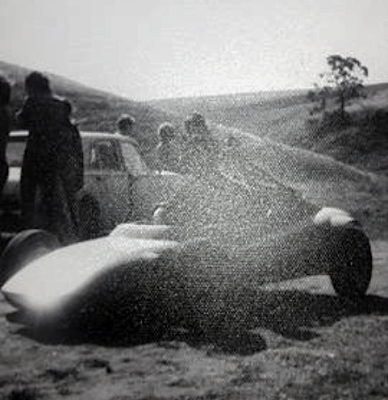Mike Brown has a soft spot for Mini Jems and that's how he got hold of the cars moulds, too. But they came with a car of which he'd like to know a bit more. This is what he wrote to me: "Hi Jeroen. My name is Mike Brown, I have had numerous Mini based cars but my main love is the Mini Jem. My father built a Mk2 Jem in 1974, which was the first car I traveled in when I was born the following year. When I was 19, after having a couple of Minis and a Mini Marcos restoration project, I finally managed to get a 1971 Mk2 Jem. I did a rolling restoration on this car and it ended up with a Metro turbo engine. Fast forward to about two years ago when I bought another 1971 Mk2 Jem after looking for one for 10 years. This car is currently waiting for restoration. I then got a call from the owner of the Jem production moulds asking if I could give them a new home (he was moving house). Obviously I jumped at the chance and went to collect them. Now for the part I need help with upon collecting them I ended up with another Mk2, said to be Malcolm Fell's (ex-Jem manufacturer) rally car. I would like to try to trace this cars history so I can re register it correctly. Mike"
Mk3 front wheel arches, but it is a Mk2 that may have been used to plug a mould for the Mk3
Picture Mike Brown
But '947 DBL' may also have been Malcolm Fell's personal rally car. Mike Brown would love to know
Picture Mike Brown
The moulds of the Mini Jem lead to the supposed Fell rally car / Mini Jem works racer
Picture Mike Brown
















































